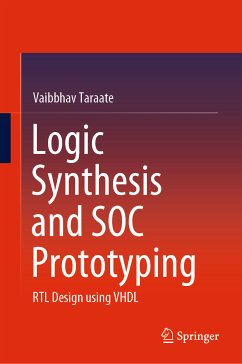This book describes RTL design, synthesis, and timing closure strategies for SOC blocks. It covers high-level RTL design scenarios and challenges for SOC design. The book gives practical information on the issues in SOC and ASIC prototyping using modern high-density FPGAs. The book covers SOC performance improvement techniques, testing, and system-level verification. The book also describes the modern Xilinx FPGA architecture and their use in SOC prototyping. The book covers the Synopsys DC, PT commands, and use of them to constraint and to optimize SOC design. The contents of this book will be of use to students, professionals, and hobbyists alike.
Dieser Download kann aus rechtlichen Gründen nur mit Rechnungsadresse in A, B, BG, CY, CZ, D, DK, EW, E, FIN, F, GR, HR, H, IRL, I, LT, L, LR, M, NL, PL, P, R, S, SLO, SK ausgeliefert werden.









